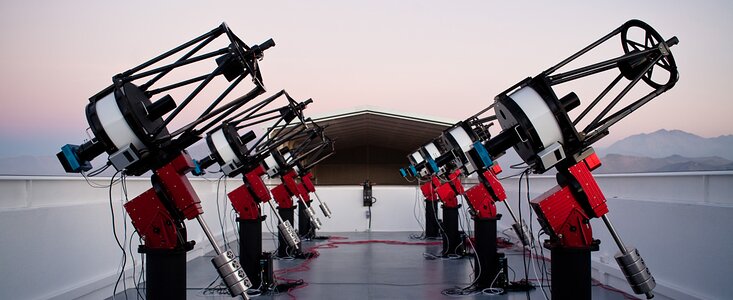ann15001 — Announcement
Chile telescope array (MEarth) spots nearby Earth-sized planet
The nearest Earth-sized planet beyond the solar system is at most 39 light-years away.
1 February 2015
That’s the distance to GJ 1132b, a newly discovered rocky planet about 1.2 times as large as Earth that orbits a small, dim star in the constellation Vela. The planet is almost certainly too hot to support life, but it is about 90 light-years nearer to us than the next-closest known Earth-sized planets. The discovery could herald the era of probing the atmospheres of nearby small worlds for signs of life. GJ 1132b is “arguably the most important planet ever found outside the solar system,” Drake Deming, an astronomer at the University of Maryland in College Park, writes in a review that accompanies the study in the Nov. 12 Nature.
The MEarth-South Observatory, an array of eight automated, 40-centimeter telescopes in Chile, spotted the shadow of GJ 1132b as it crossed in front of its star once every 1.6 days. The researchers claim that the Hubble Space Telescope could determine the composition of GJ 1132b’s atmosphere by measuring the starlight that passes through it. See more about MEarth Project and watch the time-lapse movie.

